On Valentine’s Day this year, I had a special date. No, my husband did not take me out for a fancy dinner. Instead, my friend Gena and I went to a class at Bunny, the Microbakery, the latest venture from Food and Wine Best New Chef-winner Iliana Regan, to learn how to make bakery-style sourdough.
It seems that Gena and I are part of a larger societal movement. Sourdough has suddenly become trendy. Check out this March 22 article from the New York Times about how people treasure and take care of their sourdough starters, almost like pets. (I don’t know about that, but I do know that I was worried about my starter when we went away for spring break.)
During the two-hour class at Bunny, we learned the basics of maintaining a sourdough starter and some professional secrets for baking artisan bread at home. At the end, we all got to take home detailed instructions and, most importantly, some of the bakery’s own sourdough starter.
To say that I have been obsessed with making sourdough since would not be an overstatement. My recipe, which I am going to share with you, makes two loaves. Even at the rapid rate with which we eat sourdough in this house — and my kids eat it daily — making two loaves several times a week has resulted in a fairly substantial stockpile. I give loaves away to friends; I even brought five loaves to the last Chicago Food Swap. I have another five loaves in my freezer right now. Happily sourdough freezes exceptionally well.
I keep making sourdough at this rate not only to keep my family in avocado toast but also to improve my technique. I know that I am still just a beginner at sourdough and one could spend a lifetime learning to bake bread. But after almost two months of baking bread several times a week, I am ready to share some of my thoughts and tips with you.
If you want to tackle making bakery-style sourdough bread at home, your first task is to acquire a starter. This is not as hard as it sounds. Part of maintaining a healthy sourdough starter is discarding a portion of the starter before feeding it. That means that anyone you know with a sourdough starter will be happy to give you some of theirs. If you live in Chicago, I’ll give you some of mine. Honestly.
You can also make one from scratch with flour, water, perhaps some fruit juice, and the wild yeast in the air. There are numerous explanations in cookbooks and online of how to do this. However, if you start from scratch, you will need a at least a week, and possibly more, to create a starter healthy enough to bake with. Lastly, you can buy a sourdough starter. But considering that bakers are throwing out starter all the time, see if you can find one for free first.
Sourdough starters need to be fed with flour and water to stay healthy. You can keep your starter on the counter and feed it daily or keep it in the refrigerator and feed it as little as weekly — or less. How often you should feed your starter depends on how often you want to bake with it and what kind of time you have. I keep mine on the counter and feed it daily or every other day. The important thing to know is that you need to feed it 12 hours or so before you want to bake with it.
Before you start baking sourdough bread, there are a few — only a few, I promise — pieces of equipment that are worth investing in. One is a kitchen scale. I use my kitchen scale all the time for baking because measuring by weight is far more accurate than measuring by volume. So a digital scale is a very useful piece of equipment, in my opinion. You can spend as little as $10 on a basic analog scale or upwards of $50 for a fancy digital one.
You will also need a dough scraper for mixing the dough and shaping your loaves. This too is a piece of equipment which has many uses beyond baking bread. You can choose metal or even just a cheap plastic one. Other people like a funny-looking tool called a Danish dough whisk.
Optional equipment includes baskets for proofing the bread. These baskets, which are responsible for the pretty lines on my loaves, are called brotform or banneton baskets. You can purchase cloth liners for them, or rely on flouring the baskets well to prevent your dough from sticking. But ordinary bowls will also work for proofing bread. Or, you can proof your bread in a loaf pan and bake it in that pan as well.
Also optional, but helpful, is a French tool called a lame, which is basically a razor that bakers use to slash their loaves prior to baking. You can find a basic lame for very little money, or a pretty one with a wood handle for $25 or $30. It’s up to you. Use the lame to make a plus sign on the top of your loaf, or get creative with different designs. My favorite is probably one long slash down the middle with a short diagonal slash on either side.
Lastly, you will need something to bake the bread in. It’s very helpful to have a vessel with a lid for baking this kind of artisanal loaf. The reason is because the lid will trap in the steam given off by the loaf and therefore mimic a steam-injected professional oven. You can buy many types of ceramic cloches and other bread bakers. But the truth is, a Dutch oven that is safe for high heats will work as well, and I bet most of you have a pot like this in your kitchen already.
I started my sourdough journey with 20 grams of starter in a small, plastic container. To that, I added 100 grams of warm, but not hot, water, 50 grams of whole wheat flour, and 50 grams of all-purpose flour. (By the way, I always purchase King Arthur Flour. That’s a genuine endorsement. I have never worked with them in any capacity.) I stir that mixture together with my hands and then cover and place it somewhere warm.
These are the ratios I have maintained since I first started baking sourdough, but I now have several of these plastic containers because when I go bake bread, I need 250 grams of starter plus some starter leftover to continue baking with. One container of starter in these ratios won’t make enough bread for my recipe. You could have one container with 40 grams of starter, and double the amounts above for feeding it; use a 20 gram starter and bake only loaf at a time – halving the recipe I will give you below – or keep multiple containers as I do.
When I go to feed my starter, or starters, I discard all but 20 grams of starter and feed it as described above. The discarded starter can be used to bake with — not only bread but also pancakes or pizza crust — given away or simply thrown out. (For a great sourdough pizza crust recipe, check out a book called The United States of Pizza.) I try hard to use my extra starter but, as much as it kills me to do so, some amount always ends up being thrown out.
When I want to bake bread, I always make sure to feed my starter 12 or so hours before I plan to start baking and try to make sure I put it somewhere a little warmer than room temperature. After 12 or 16 hours, the starter should be expanded and quite bubbly. (See the picture of starter at the top of this page.)
But before I start baking, I always test the health of my starter by putting a little in a bowl of water: if it floats, it’s ready. If not, it needs more time. I will then place it somewhere warm — even on top of the stove or the toaster — and hope that in an hour or so, it will pass the float test. This may seem silly, but think of it this way: if the starter isn’t light enough to float in water, how will it make a loaf of bread rise?
My recipe for sourdough, as you will see below, is a long process. You need to be at home and able to work on the dough at 40 to 45-minuute intervals over a period of almost four hours. Then, the dough needs to rise in the refrigerator overnight. I know that this schedule is not very realistic for most people. I work at home and am able to get up from my computer every forty minutes to turn the dough. (In fact, I welcome the break!) But for most people, this process would have to be an evening or weekend project.
The results, however, are so worth it. This bread is as good as any I have ever had. My family devours it: plain, slathered with butter, alongside soups and stews, as the foundation of a sandwich. Every batch comes out a bit different; sometimes more sour; sometimes denser or lighter. That’s the magic of working with a live starter. I have found tremendous satisfaction in working out my own system for maintaining my starter and my own techniques for achieving the loaf of my dreams, one that is tall, tangy and full of air bubbles.
A few final tips: instead of kneading the dough, stretch and turn it. It’s a gentler approach to building structure in the dough without knocking out the air. Second, I instruct you to keep your dough in a warm place during the rising process. I have found that this is important. Room temperature is not warm enough.
I have come up with all sorts of tricks to keep my dough warm, like putting it on top of the stove when the oven is on or on a warm (but not lit) burner, in a sunny room with the blinds open or even on top of the radiator. It’s tricky because you don’t want the dough to get too warm either. The ideal temperature is around 76 degrees.
If you really can’t handle the uncertainty, you can purchase a bread-proofer which maintains a constant temperature. (It’s also good for making yogurt or tempering chocolate.) I’m seriously considering investing in one. Another participant in the class recommends placing the dough on a heating pad set on low and insulating it with a couple of towels. What a great, low-cost solution!
As I mentioned at the beginning, I still consider myself a sourdough novice. And this is only one, pretty basic approach to making sourdough. But it has been working for me and I am happy with the results. As I learn more, I will be certain to share it with you. If you have any thoughts about sourdough, please share them in the comments or feel free to email me.
Have you ever maintained a sourdough starter? Are you intrigued by this popular trend?
Ingredients
- 250 grams healthy sourdough starter (able to pass the "float test")
- 800 grams bread flour
- 200 grams whole wheat flour
- 29 grams kosher salt
Instructions
- In a large bowl, combine the sourdough starter with 700 grams of warm, but not hot, water and mix together.
- Add the flour and mix with your hands or a dough scraper until all the flour is incorporated. (The dough may seem dry at this point.) Cover with a clean kitchen towel and allow to rest for 45 minutes in a warm place.
- Add the salt and 55 additional grams of warm water to the dough and mix well to distribute the salt throughout the dough.
- Starting at the top of the bowl, pick up the edge of the dough and stretch it over the rest of the dough in the bowl. Turn the bowl 45 degrees and repeat this stretching and lifting process with the side that is now at the top. Do this two more times so that you have stretched each side of the dough ball. These four "turns" is how we will build structure in our dough without kneading it.
- Cover the bowl and place in a warm spot for forty minutes.
- Repeat the four turns again. Cover and allow to rest for another 40 minutes.
- Repeat this sequence two more times so that you have done the four turns four times, with a forty minute rest between each turn. By the end, the dough should be elastic enough that you can easily pull one side up high and fold it over the rest of the dough.
- After the fourth set of turns, allow the dough to rise or ferment, covered, in a warm place for 45 minutes to an hour.
- Turn the dough out onto a well-floured board. Divide into two equal parts.
- Using your dough scraper, shape each piece of dough into a round boule-shape. Use the edge of the scraper to push the dough into a round shape, tucking the edges under. Add more flour to the board or dough as necessary to prevent sticking.
- Allow the loaves to rest for 10-15 minutes and then shape again.
- Place the loaves top side down into a well-floured brotform basket OR a lightly oiled bowl. Cover with plastic wrap and refrigerate for 12 hours or overnight.
- To bake, preheat oven to 450.
- Turn out the loaf and place top side up in a lidded baking vessel, such as a ceramic cloche or Dutch oven. If the vessel does not have a dark or nonstick interior, coat the bottom lightly with oil and sprinkle with coarse flour, such as semolina, to prevent sticking.
- Slash the top to allow steam to escape. You can make a cross or another decorative design.
- Cover and bake for 30 minutes until loaf has risen.
- Remove cover and bake an additional 15 minutes or until you achieve the color you desire.
- Turn the loaf out onto a wire rack to cool. Repeat process with second piece of dough.
- To store your bread, do not wrap it! Allow the crust to develop and adapt. We store ours cut-side down on the cutting board.
- To freeze, wrap well in plastic wrap and then wrap again in foil. Thaw at room temperature wrapped to allow the moisture from the thawing process to be reabsorbed into the bread. Then store unwrapped.
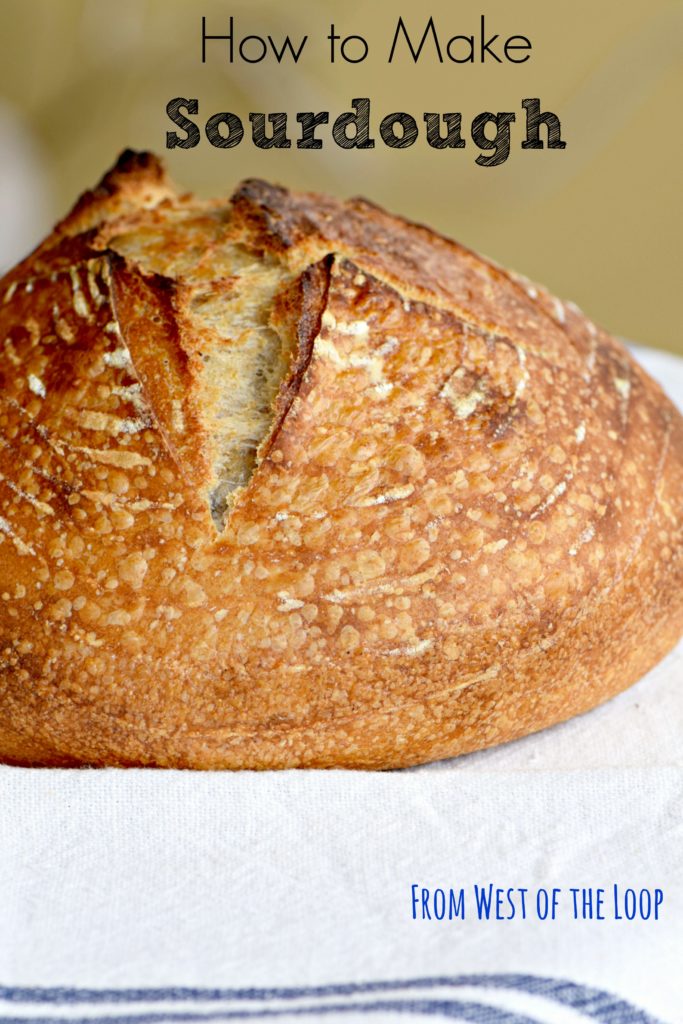
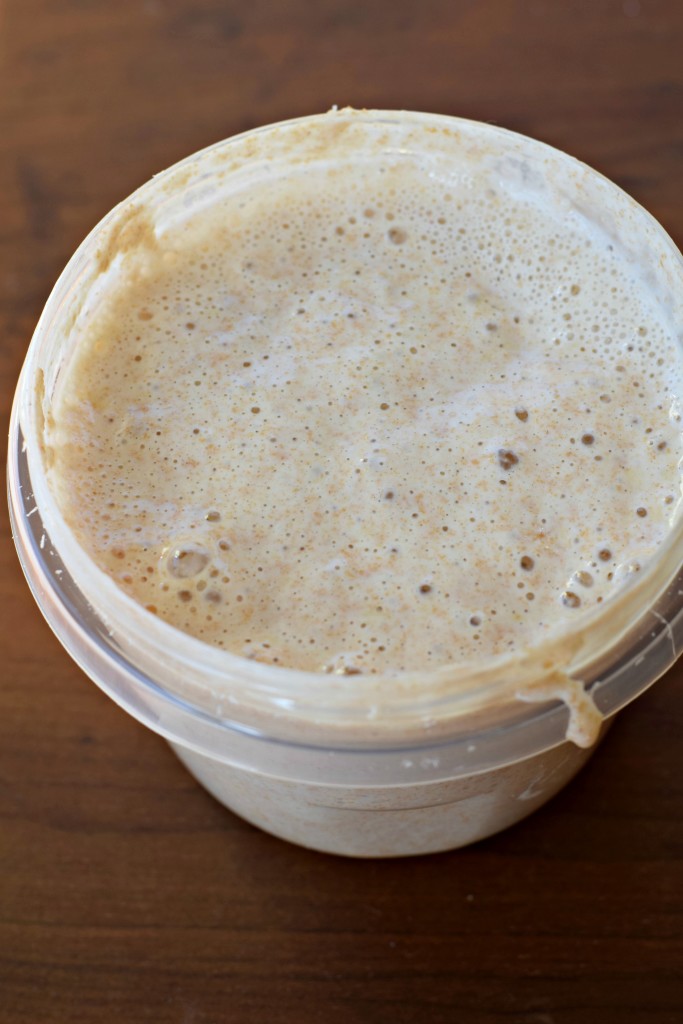
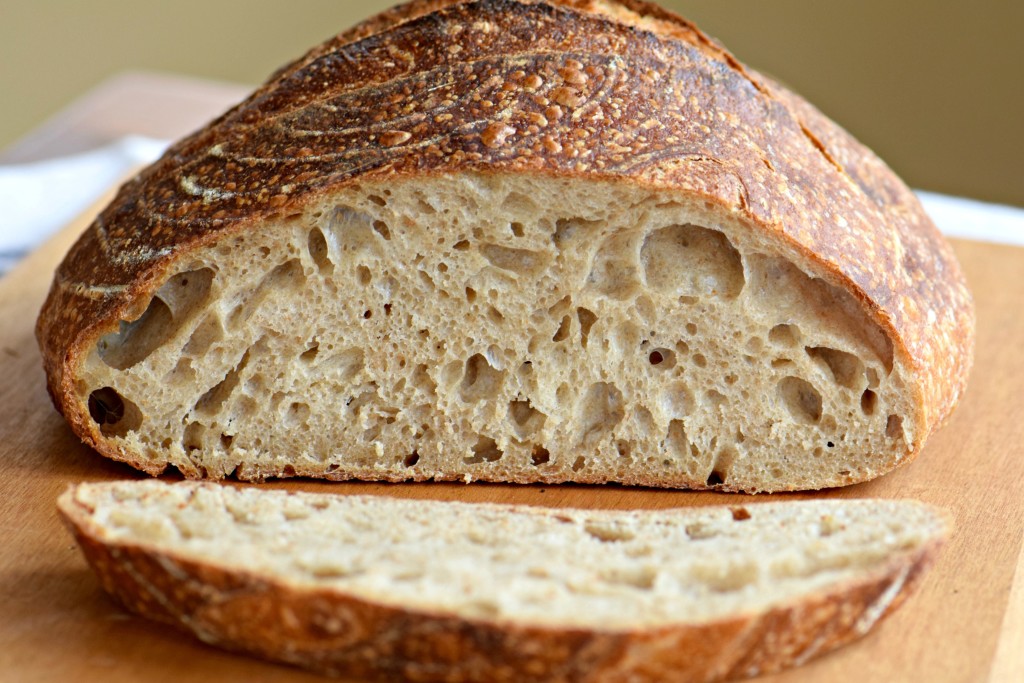
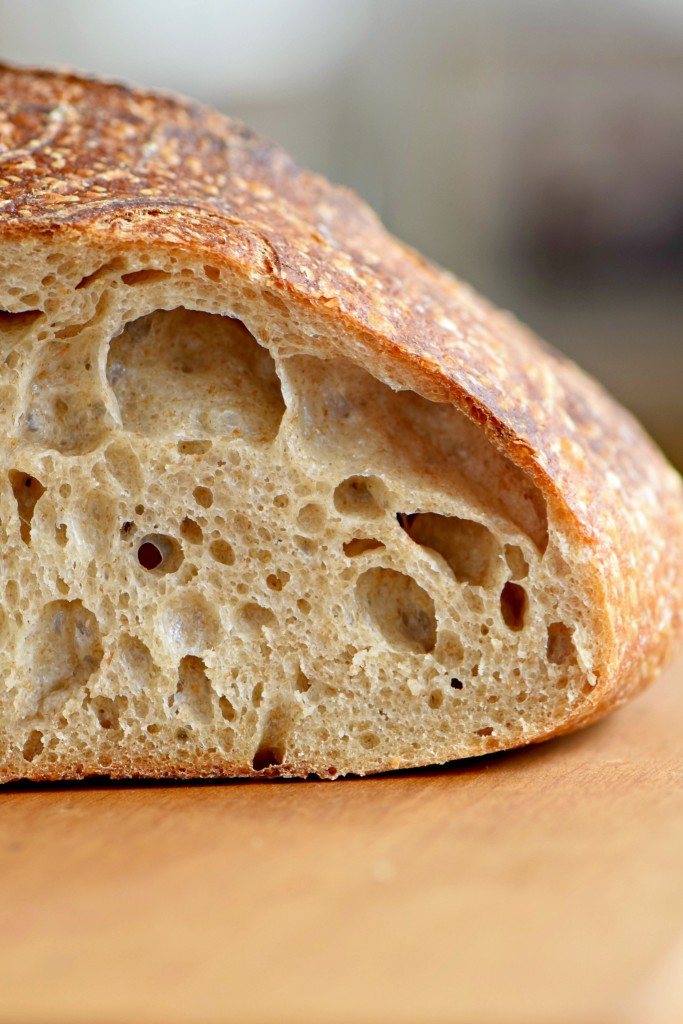
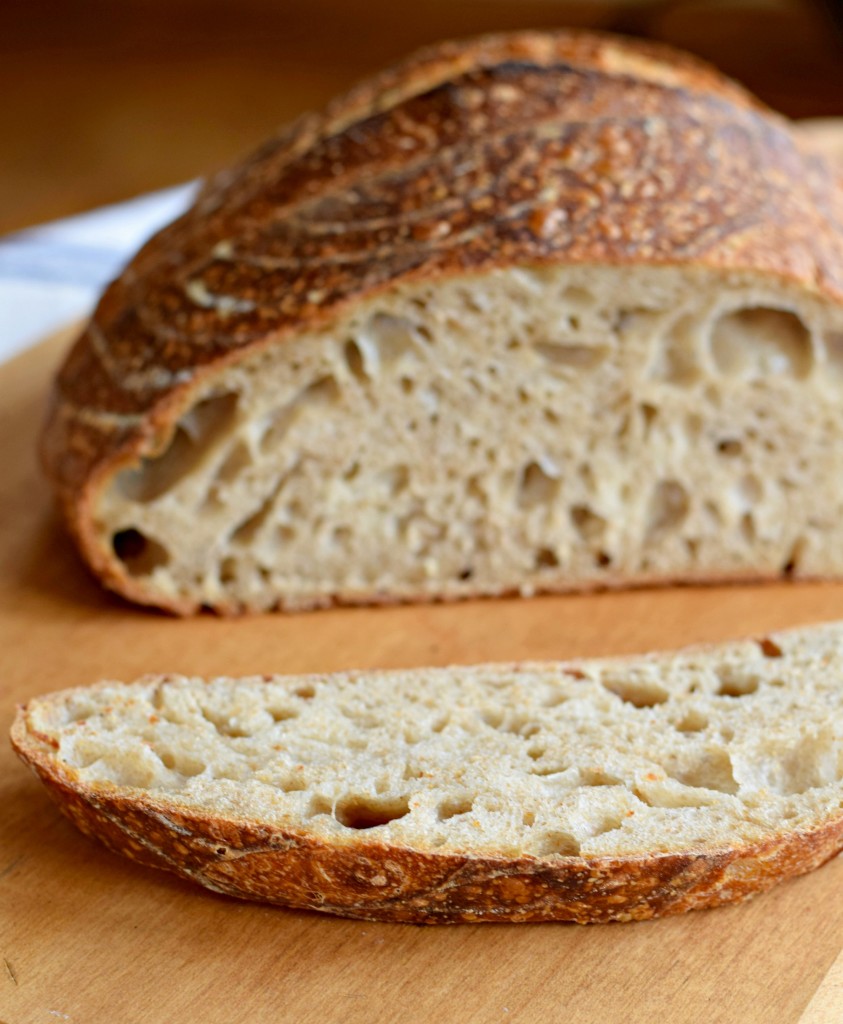
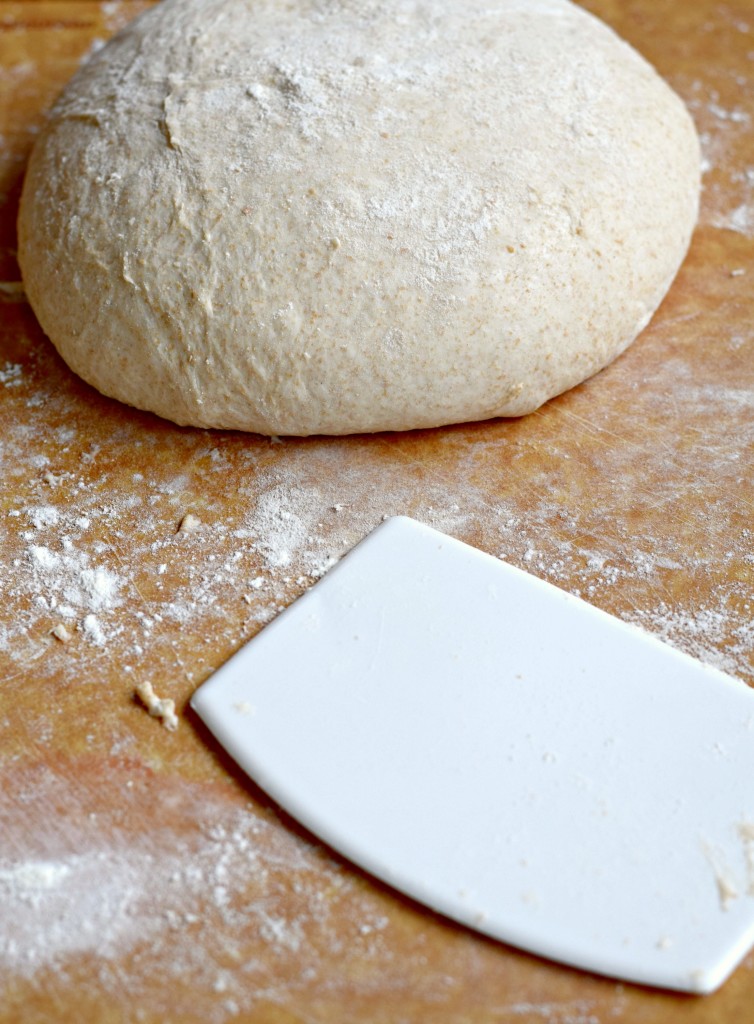
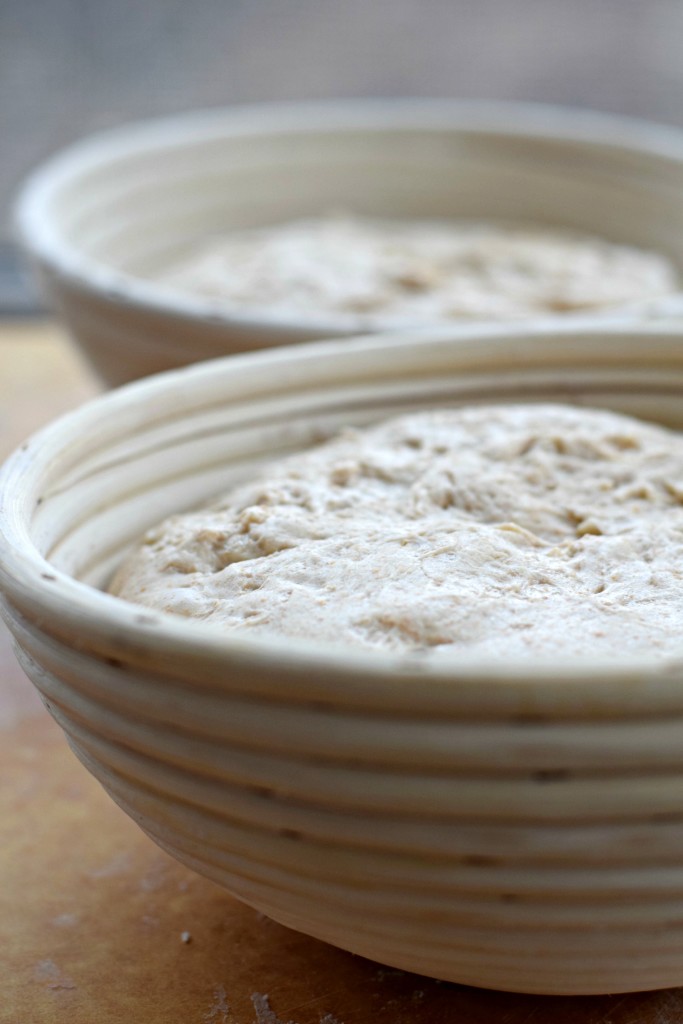
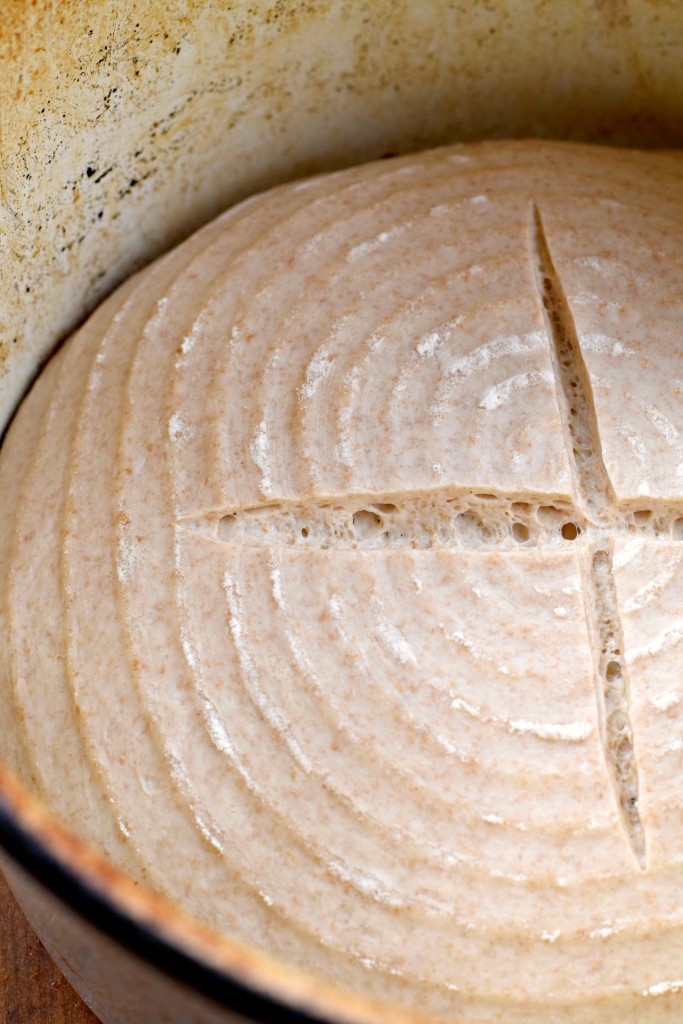
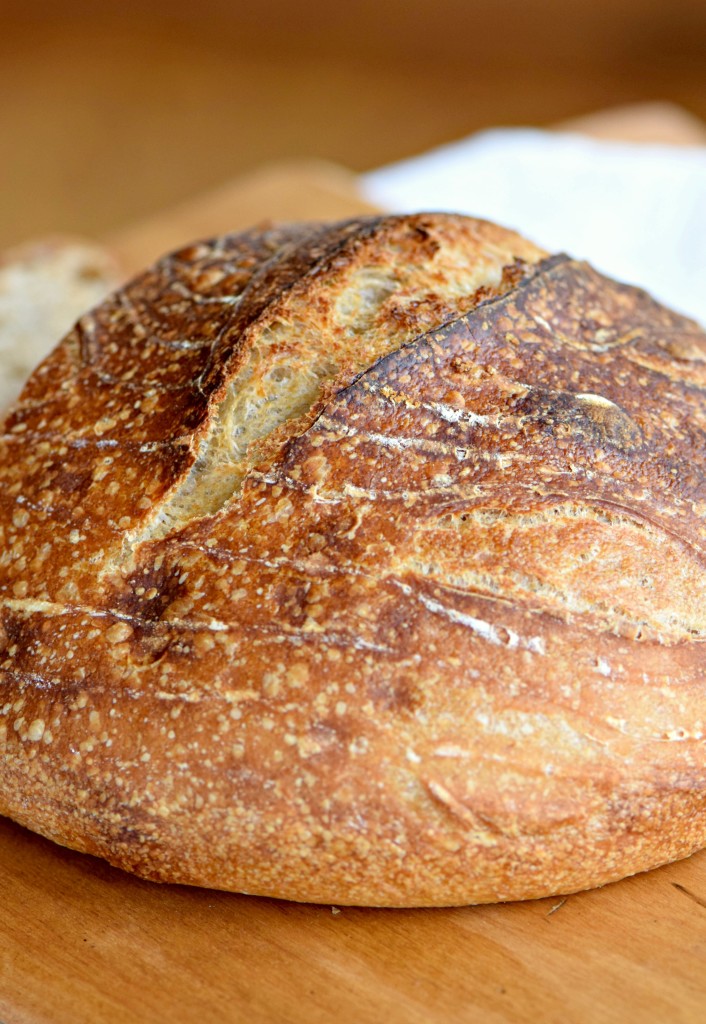
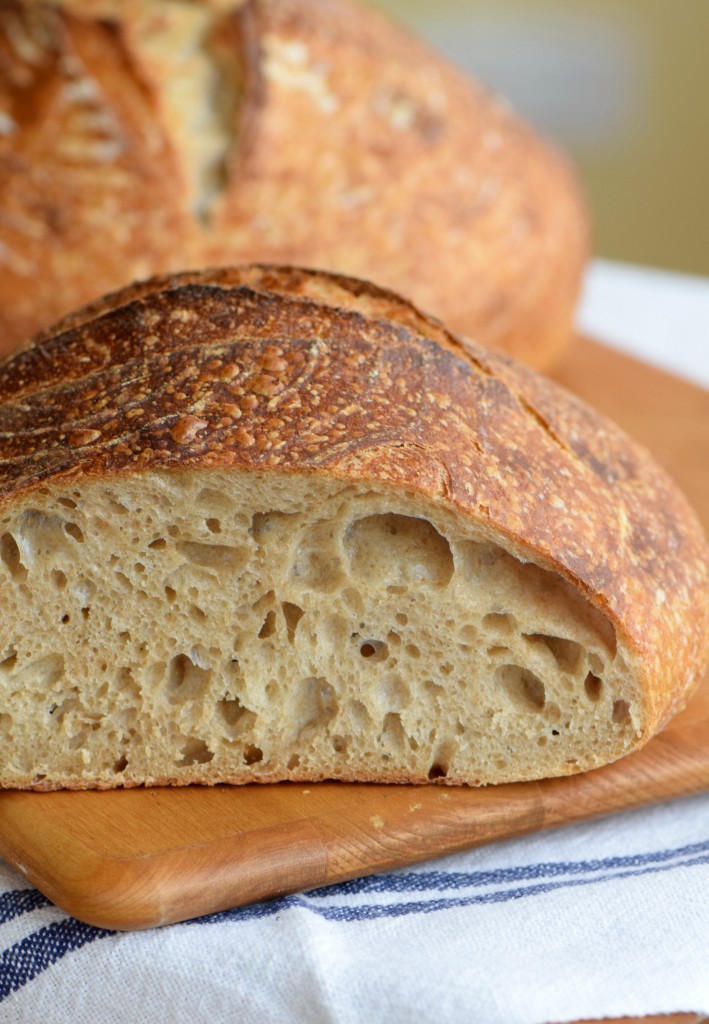
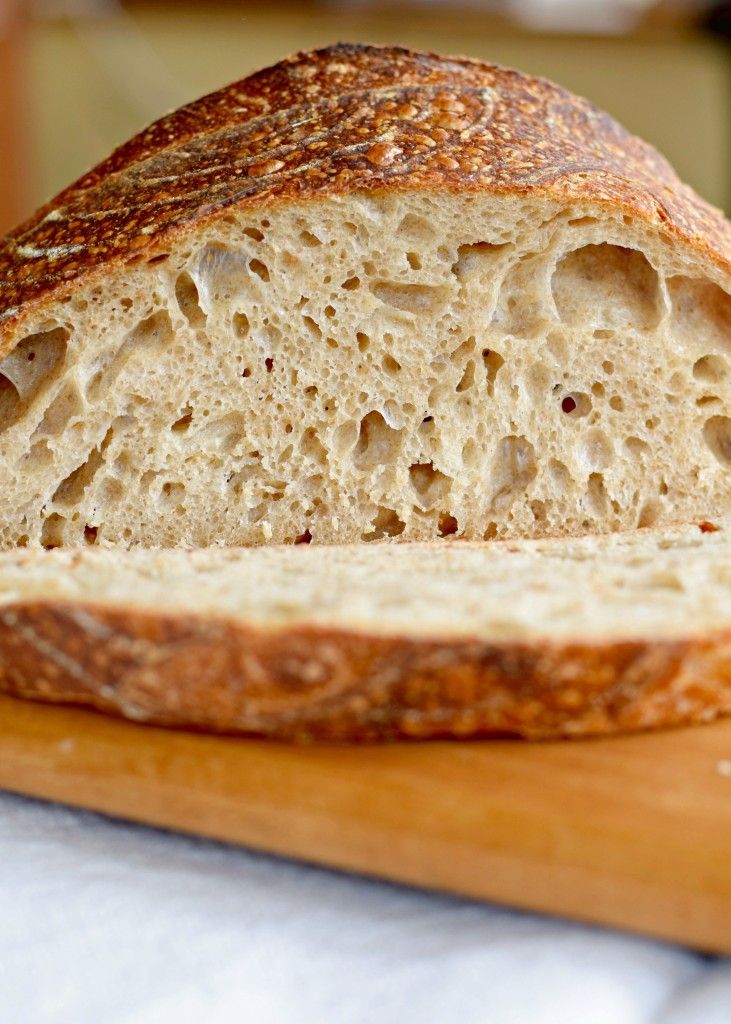
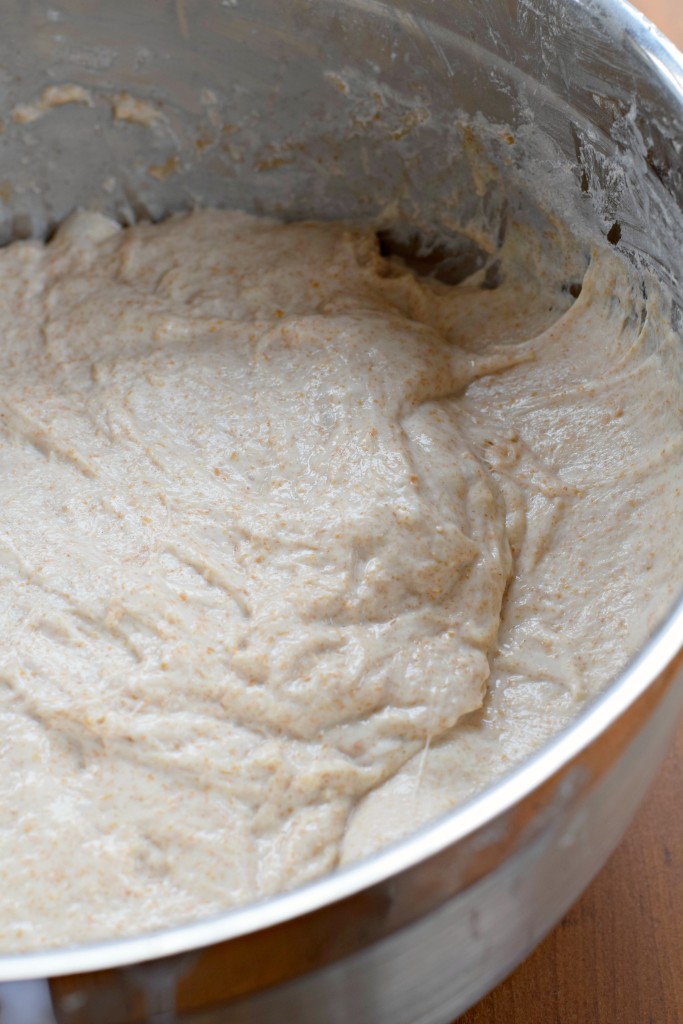
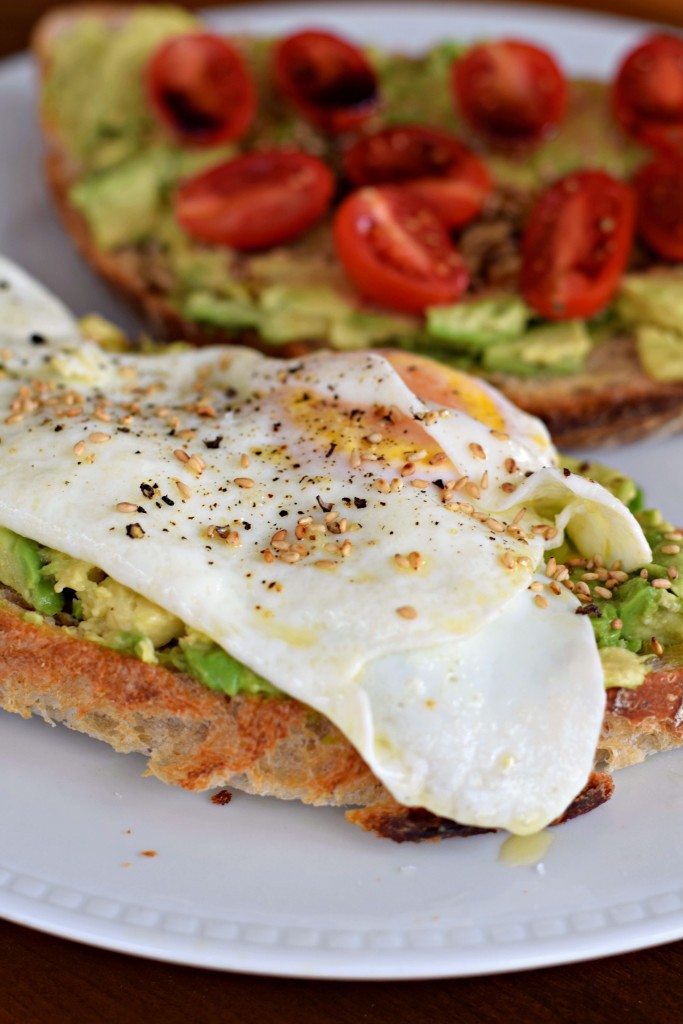

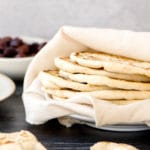
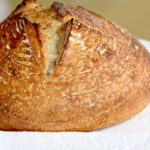



Hey Emily,
I was also in the Valentines Day class. It’s nice to see that someone else has kept their starter alive and is baking bread. Not being much of a bread eater, most of mine ends up at work and my neighbors houses. I have also adjusted the recipe to make white sour dough. For mixing I use a Danish Dough Whisk and for consistent proofing heat I use a 12×24 heating pad set to low with a couple of towels for insulation. Both the whisk and pad are easy to buy on Amazon.com.
Hi Paul! I remember you from the class. Thanks so much for your comment. I love the heating pad tip. Way cheaper than a bread-proofing box. I’m going to try that and add it to the post!
Great photos. Your bread looks absolutely fabulous !
Can you believe how far I have come, Nancy?
What a wonderful article Emily! Your tips and guidance are perfect, easy to understand for beginners and experienced bakers alike. I am so envious of your breads – they are stunning! I need to get another starter going soon for summertime baking. Too bad I’m not closer to you or I would scam some of the leftover starter from you! 😉
Thanks Jane. I’m really curious about how you do gluten-free sourdough. What flour do you use for the starter?
What a fabulous guide to sourdough bread making! Your loaf is gorgeous!